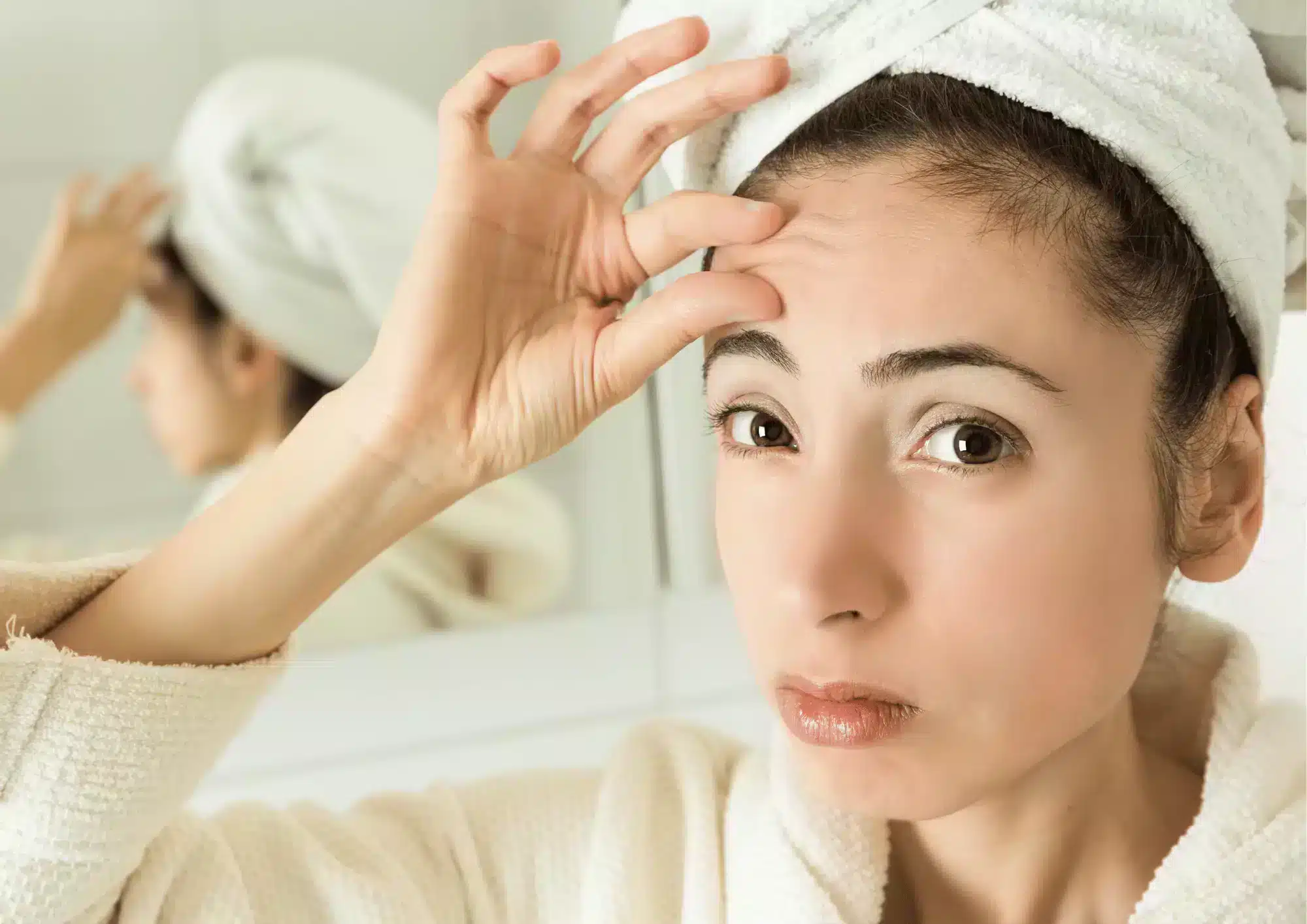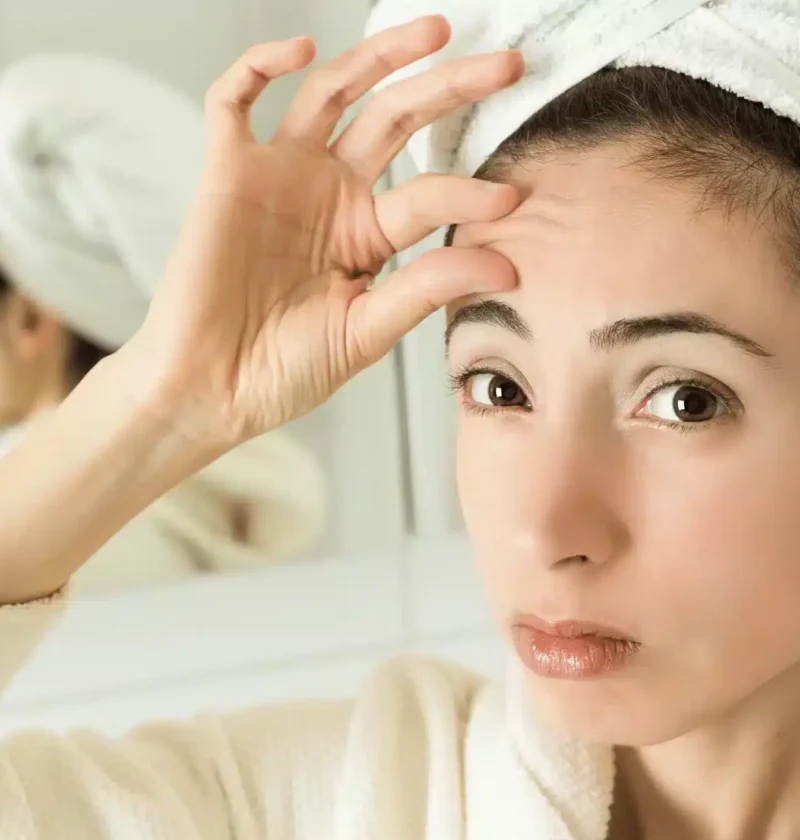
Correcting Forehead Wrinkles: Botox vs Dermal Fillers
What are forehead wrinkles?
Forehead wrinkles are the horizontal creases that occur on the forehead. They are also known as horizontal rows, worry lines, or expression lines. Forehead wrinkles appear when a person makes the same expression repeatedly.
What causes them?
There are a number of factors that may lead to forehead wrinkles. These include:
• Aging: With age, collagen synthesis is diminished and the elastin in the skin becomes weaker. This causes the skin to become less supple and firm, making forehead wrinkles more prominent.
• Exposure to UV rays: UV rays cause the generation of free radicals in the skin and interfere with the synthesis of collagen and elastin, causing the skin to lose it suppleness and firmness, which makes forehead wrinkles more prominent.
• Genetics: Young individuals can exhibit forehead wrinkles due to their genes.
• Repetitive facial expressions: Normal animation while talking, lifting the eyebrows with the frontalis, the major muscle of the forehead during periods of stress, or just to express emotion can cause the appearance of forehead lines, which can deepen over time.
• Sleeping position: It has been postulated that sleeping on the stomach may cause forehead wrinkles.
• Smoking: Smoking decreases the production of collagen, causing the skin to become less supple, resulting in forehead wrinkles.
• Inadequate sleep: Inadequate sleep decreases the production of collagen, accelerating the formation of forehead wrinkles.
Treatment of forehead wrinkles
There are a number of ways that forehead wrinkles can be treated. A browlift surgery can be used to permanently get rid of forehead wrinkles. Other procedures provide temporary results. These include dermabrasion, laser skin surfacing, Botox injections, and soft tissue fillers. Microdermabrasion, though not effective for deep forehead wrinkles, can be used for more superficial forehead wrinkles.
Dermal fillers treatment
Dermal fillers are made of substances that plump up the skin to reduce the appearance of skin depressions.
Dermal fillers can be used as a combination treatment with Botox or thread lifts to obtain optimal results. Typically, hyaluronic acid-based fillers such as Juvederm or Restylane are used to correct forehead lines. Although forehead wrinkles are considered dynamic wrinkles, soft tissue fillers work to support the skin for a smoother complexion.
Botox (botulinum toxin) treatment
Botox is a toxin that paralyzes the muscle into which it is injected. This makes the muscle relax, helping to reduce the frown lines on the forehead. Botox is indicated for patients who have dynamic lines, lines that occur due to muscle contractions, such as frown lines, horizontal forehead lines, and crow’s feet.
Botox treatments temporarily paralyze the muscle, ultimately smoothing out forehead lines for a more youthful appearance. Dermal fillers may be used together with Botox to help smooth out deeper lines. As well, Botox is often used as a preventative treatment for those in their 20s or early 30s. Other botulinum toxin brands include AZZALURE® medications, fillers made by Xeomin, and popular Bocouture injectables.
How long does treatment usually last?
Depending on the filler used, treatments can last up to a year or longer. Botox on the other hand typically lasts between 3 to 6 months.
Aesthetic medicine products are developed and regulated to meet stringent safety and efficacy standards. They are typically administered by trained healthcare professionals such as dermatologists, plastic surgeons, and specialized nurses in clinical settings. These products aim to provide effective solutions for cosmetic enhancement, skin rejuvenation, and overall aesthetic improvement, contributing to both physical appearance and self-confidence.
Key categories of aesthetic medicine products include:
-
Injectables: This category includes products such as dermal fillers, botulinum toxins (e.g., Botox), and collagen stimulators. These injectables are used to smooth wrinkles, add volume, and improve facial contours.
-
Skin Rejuvenation Treatments: Products like chemical peels, microdermabrasion systems, and laser devices are used to improve skin texture, reduce pigmentation irregularities, and enhance overall skin tone.
-
Skincare Products: These include medical-grade cleansers, moisturizers, serums, and topical treatments containing active ingredients like retinoids, antioxidants, and growth factors. They are formulated to address specific skin concerns such as acne, aging, and hyperpigmentation.
-
Hair Restoration Products: Medical treatments and products designed to promote hair growth and treat conditions such as male and female pattern baldness.
-
Body Contouring and Fat Reduction: Devices and products used for non-surgical body sculpting, such as cryolipolysis (cool sculpting) devices and injectable lipolytics.
-
Cosmeceuticals: High-performance skincare products that bridge the gap between cosmetics and pharmaceuticals, often containing potent ingredients with proven clinical benefits.
-
Wound Care and Scar Management: Products like silicone sheets, gels, and advanced wound dressings used to improve healing and reduce the appearance of scars.





